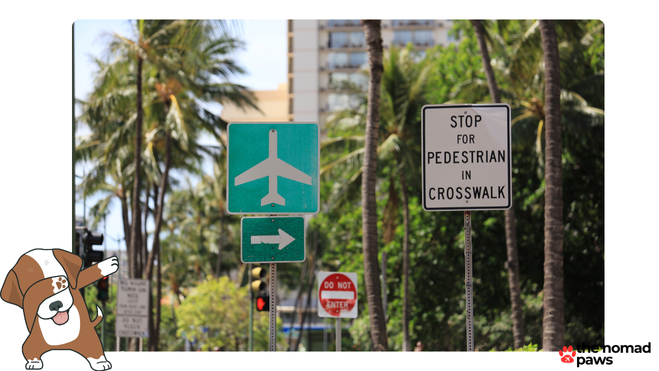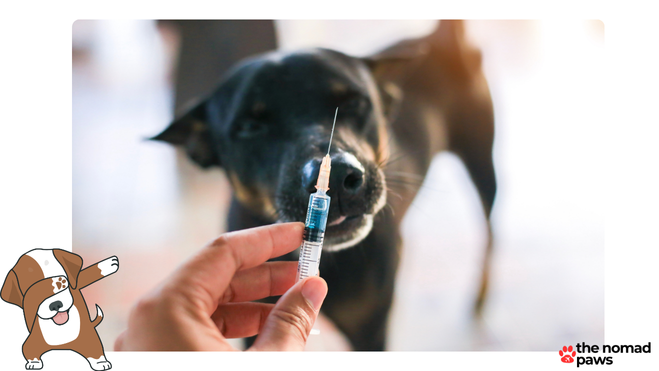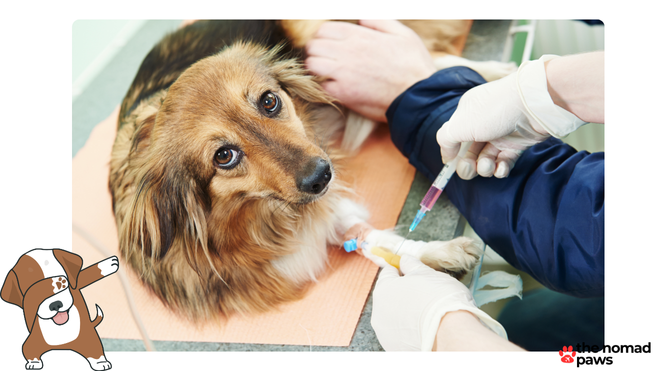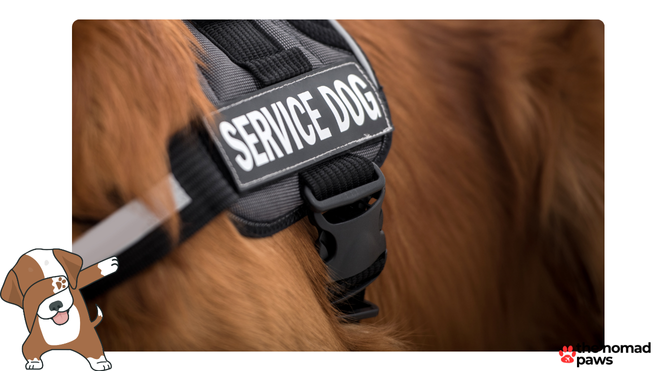None of us want to leave our furry friends behind when we move or travel to a new place, especially a paradise like Hawaii.
But the prospect of subjecting your beloved dog or cat to a lengthy quarantine can be daunting.
Fortunately, with proper planning and preparation, it’s possible to bring your dog to Hawaii without quarantine.
This comprehensive guide will walk you through the process, ensuring a smooth transition for both you and your four-legged friend.
Did you know that Hawaii is the only rabies-free state in the US?
This unique status is the primary reason for the state’s strict pet import regulations. However, by following the right steps, you can navigate these rules and enjoy the Aloha spirit with your dog by your side.
Understanding Hawaii’s Pet Quarantine Laws

Hawaii’s pet quarantine laws have a long and interesting history, dating back to 1912 when the territory first implemented measures to prevent the introduction of rabies.
Over the years, these regulations have evolved, balancing the need to protect the islands’ rabies-free status with the desire to make pet travel more accessible.
In the past, all dogs entering the state of Hawaii were subject to a mandatory 120-day quarantine. This lengthy period was not only stressful for pets and their owners but also costly.
Recognizing these challenges, the state introduced more flexible options in 2003, including the 5-Day-or-Less Quarantine Program and the Direct Airport Release (DAR) option.
Why Hawaii’s Pet Quarantine Laws Are So Strict
Hawaii takes its rabies-free status very seriously, and for good reason. As an isolated island chain, Hawaii has managed to remain free from this deadly disease, which is still prevalent in many parts of the world.
[BOX] The strict quarantine laws serve as a crucial line of defense against the accidental introduction of rabies through infected animals.These regulations not only protect the local pet population but also safeguard native wildlife and the overall ecosystem of the islands.
By maintaining its rabies-free status, Hawaii can avoid the significant public health risks and economic costs associated with rabies outbreaks.
What is the 5-Day-or-Less Program?
The 5-Day-or-Less Program is a quarantine option that allows pets to be released within five days of arrival in Hawaii, provided they meet all the necessary requirements.
This program significantly reduces the time pets spend in quarantine, making it a popular choice for many pet owners.
To qualify for the 5-Day-or-Less program, pet owners must complete a series of steps, including vaccinations, blood tests, and paperwork, well in advance of their arrival in Hawaii.
While it requires careful planning and attention to detail, the 5-Day-or-Less Program offers a much more pet-friendly alternative to the traditional 120-day quarantine.
Direct Airport Release (DAR): An Even Faster Option

For those who want to avoid quarantine altogether, the Direct Airport Release (DAR) option is the way to go.
DAR allows pets to be released directly to their owners at the airport upon arrival, provided all requirements are met.
This option is essentially an expedited version of the 5-Day-or-Less Program, with stricter timelines and documentation requirements.
To qualify for DAR, pet owners must complete all necessary steps, including vaccinations, blood tests, and paperwork submission, well ahead of their arrival date.
While it requires meticulous planning, DAR offers the quickest and most stress-free entry for pets arriving in Hawaii.
Benefits of Avoiding Quarantine for Your Dog’s Mental Health
Avoiding quarantine isn’t just about convenience; it’s also super-important for your dog’s mental well-being.
Extended periods of isolation can be extremely stressful for dogs, potentially leading to anxiety, depression, and behavioral issues.
By opting for the 5-Day-or-Less Program or DAR, you’re prioritizing your pet’s emotional health and ensuring a more positive transition to their new Hawaiian home.
Keeping your dog with you during the move helps maintain their sense of security and routine, which is especially important in a new environment like Hawaii.
Essential Requirements for Quarantine-Free Dog Entry to Hawaii

Rabies Vaccination: Timing and Documentation
The cornerstone of Hawaii’s pet import requirements is proper rabies vaccination.
As stated on the animal quarantine information page, your pet must have received at least two rabies vaccinations in their lifetime, with the most recent one administered no less than 30 days and no more than 12 months prior to arrival in Hawaii for 1-year vaccines, or no more than 36 months for 3-year vaccines.
As you understand, keeping detailed records about these vaccinations is crucial if flying a dog to Hawaii is an option.
The info you need include the date of administration, the vaccine’s serial number, and the name of the administering veterinarian.
If you’re planning to travel to Hawaii with your pet, keep everything ready. These records will be essential when submitting your paperwork for entry into Hawaii.
Other Required Vaccinations and Treatments
While rabies vaccination is the primary focus, it’s also important to ensure your dog is up-to-date on other core vaccinations.
These typically include:
- distemper
- parvovirus
- canine hepatitis.
Additionally, Hawaii requires that dogs be treated for external parasites within 14 days of arrival.
It’s always a good idea to consult with your veterinarian about any additional vaccinations or treatments that might be beneficial for your dog, especially considering the unique climate and environment of Hawaii.
The Crucial Rabies Antibody Test

The Fluorescent Antibody Virus Neutralization (FAVN) test is a critical component of Hawaii’s pet import requirements.
This blood test measures the level of rabies antibodies in your dog’s system, ensuring that they have developed adequate immunity to the virus.
To pass the FAVN test, your dog’s blood sample must show a rabies antibody level of at least 0.5 IU/ml.
This test must be performed by an approved laboratory, and the results typically take 2-4 weeks to process.
Timeline and Process for the Rabies Antibody Test
Timing is crucial when it comes to the FAVN test.
The blood sample for the test must be taken at least 30 days after the most recent rabies vaccination.
The successful test result must be received no less than 30 days and no more than 36 months before your planned arrival in Hawaii.
If your dog fails the FAVN test, you’ll need to revaccinate and retest, which can significantly delay your travel plans.
For this reason, many pet owners choose to perform the test well in advance of their planned move to allow for any potential setbacks.
Required Documentation for Hawaii Entry

A health certificate issued by an accredited veterinarian is required for all dogs entering Hawaii.
This certificate must be issued within 14 days of your arrival and should confirm that your dog is free from any signs of infectious or contagious diseases.
In addition to the health certificate, you’ll need to complete and submit the Dog and Cat Import Form (AQS-278).
Want to request a Direct Airport Release for your pet? Download this form to get started.
This form provides essential information about your pet and serves as your official request for Direct Airport Release or the 5-Day-or-Less Quarantine Program.
Proof of Microchip
All dogs entering Hawaii must have a working microchip implanted before arrival.
The microchip number must be included on all documentation, including vaccination records and the health certificate. This serves as a permanent form of identification for your pet throughout the import process.
It’s important to note that Hawaii requires ISO-compatible microchips (134.2 kHz). If your dog has a different type of microchip, you may need to have a new one implanted or bring your own microchip scanner.
Hawaiian Airlines pet policy provides specific guidelines for traveling with pets, which can be helpful when planning your journey.
Planning Your Dog’s Journey to Hawaii

Preparing your dog for travel to Hawaii requires careful planning and attention to timelines.
Here’s a general overview of the process:
- 12+ months before travel: Ensure your dog has at least two rabies vaccinations.
- 6-9 months before travel: Conduct the FAVN rabies antibody test.
- 4-6 months before travel: Begin researching airlines and making travel arrangements.
- 3 months before travel: Start the paperwork process, including import forms.
- 30-60 days before travel: Schedule a pre-travel veterinary check-up.
- 14 days before travel: Obtain the health certificate from your veterinarian.
- 10 days before travel: Submit all required documents to the Animal Quarantine Station.
Remember, these timelines are general guidelines. It’s always best to check the official Hawaii Department of Agriculture website for the most up-to-date requirements and deadlines.
Choosing Pet-Friendly Airlines for Your Hawaii Trip
Obvioously, picking the right airline is one of the key steps for a smooth journey to Hawaii with your dog.
Look for airlines that have experience transporting pets to Hawaii and are familiar with the state’s import requirements. Some airlines, like Alaska Airlines and pets, have specific programs and services for pet travel to Hawaii.
Consider factors such as the airline’s pet policies, in-cabin vs. cargo options (depending on your dog’s size), and any breed or weather restrictions.
It’s also worth checking if the airline offers any specialized pet travel services or has staff trained in handling animals.
Here on the Nomad Paws, you’ll find a complete breakdown of the dog policies adopted by all the most popular airlines in the world. Browse through them, read our comments, and let our experience help you with your search!
The Role of Intermediate Handlers in Pet Transport
For some pet owners, especially those traveling from international locations or with multiple layovers, using an intermediate handler can be a great idea.
These professionals specialize in pet transportation and can help navigate the complex requirements for bringing a dog to Hawaii.
Intermediate handlers can assist with paperwork, coordinate with airlines, and even provide temporary care for your pet if needed during transit.
While this service comes at an additional cost, it can provide peace of mind and ensure all requirements are met, particularly for complex travel itineraries.
Arrival Procedures: What to Expect When Landing in Hawaii with Your Dog

Step-by-Step Guide to Clearing Pet Customs in Honolulu
Upon arrival in Honolulu, follow these steps to clear pet customs:
- Collect Your Dog: If your dog traveled in cargo, collect them from the designated pet pickup area.
- Present Documentation: Head to the Airport Animal Quarantine Holding Facility with all your documentation.
- Inspection: An inspector will review your paperwork and conduct a brief health check of your dog.
- Microchip Verification: The inspector will scan your dog’s microchip to confirm its identity.
- Fee Payment: Pay any remaining fees (if applicable).
- Release: If everything is in order, your dog will be released to you.
Picking Up Your Dog and Final Paperwork Verification
Once you’ve cleared the inspection process, you’ll be able to reunite with your dog.
Double-check all paperwork to ensure you have copies of everything for your records. If you encounter any issues or have questions, don’t hesitate to ask the quarantine staff for assistance.
Remember, even if you’ve qualified for Direct Airport Release, you should still expect the process to take some time.
Be patient and prepared for potential delays, especially during peak travel seasons.
Potential Challenges and How to Overcome Them

What to Do if Your Dog Doesn’t Qualify for the 5-Day-or-Less Program
If your dog doesn’t meet all the requirements for the 5-Day-or-Less Program or Direct Airport Release, they may need to undergo the full 120-day quarantine. In this case, you have a few options:
- Postpone Your Trip: If possible, delay your travel plans to complete all necessary requirements.
- Leave Your Dog Behind Temporarily: Arrange for your dog to stay with family or friends until they can meet the requirements.
- Consider a Pet Relocation Service: Professional services can help navigate complex situations and may have solutions you haven’t considered.
Breed Restrictions for Dogs Entering Hawaii
While Hawaii doesn’t have specific breed restrictions for entry, it’s important to note that some airlines have breed-specific policies, particularly for brachycephalic (flat-faced) breeds.
As we explain on this article about French bulldogs on planes, these airlines may restrict or prohibit certain breeds from flying, especially in cargo holds.
If you have a breed that’s often subject to restrictions, such as a Bulldog or Pug, research airline policies carefully and consider airlines that allow large dogs in cabin if your pet qualifies as a larger breed.
Dealing with Unexpected Delays or Complications
Despite careful planning, unexpected issues can arise. Here are some tips for handling common problems:
- Flight Delays: Have a backup plan for your dog’s care if your flight is significantly delayed or cancelled.
- Documentation Issues: Keep digital copies of all documents in case of loss or damage.
- Health Concerns: Know the location of veterinary clinics near your arrival airport in case of emergency.
- Quarantine Requirement: If your dog unexpectedly requires quarantine, stay calm and work with the quarantine staff to understand your options.
Remember, flexibility and a positive attitude can go a long way in navigating unexpected challenges.
Special Considerations for Service Dogs and Emotional Support Animals

Service dogs have special status under the Americans with Disabilities Act (ADA), which extends to air travel and entry into Hawaii. While service dogs are still required to meet Hawaii’s rabies and health requirements, they may be eligible for expedited processing upon arrival.
To qualify for these accommodations, you’ll need to provide documentation of your dog’s service animal status and ensure they are trained to behave appropriately in public settings.
My advice? Reach out to the Hawaii Animal Quarantine Station in advance to discuss any specific arrangements for your service dog.
Hawaii’s Regulations with an Emotional Support Animal
While Emotional Support Animals (ESAs) don’t have the same legal status as service dogs, many of the same pet import rules apply.
ESAs must meet all the standard requirements for dogs entering Hawaii, including vaccinations, blood tests, and health certificates.
It’s important to note that airlines have become more restrictive with their ESA policies in recent years. Check with your chosen airline about their current ESA policy, as you may need to transport your emotional support animal as a regular pet.





